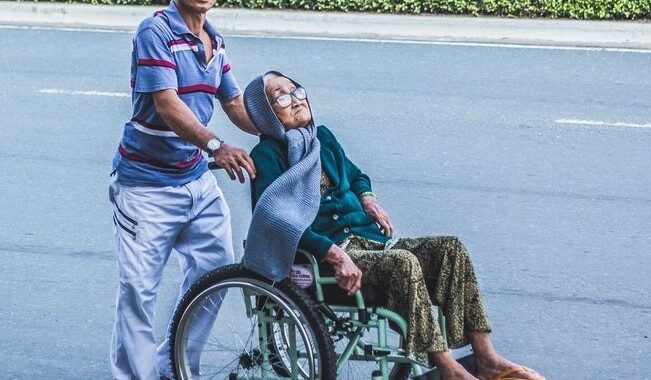Marginalizing Those in Wheelchairs

Despite a steady year of diversity, equality, and inclusion conversations, the 2021 BraunAbility Drive for Inclusion Report Card uncovered that of all marginalized groups, those with mobility challenges have the fewest accommodations to be fully included in society. Compared with 2020 results, the report also found a disappointing 14% decline in the public’s willingness to understand and accommodate those with mobility challenges, indicating a seemingly “back to normal” attitude as the nation’s restrictions begin to lift.
Only 23% of a mobility disability community think people with mobility challenges are fairly accommodated, according to a BraunAbility survey.
“[After COVID,] it seems many people are already quickly forgetting to accommodate the needs of those in wheelchairs,” noted a wheelchair user who responded to the survey.
BraunAbility, the leading manufacturer of wheelchair-accessible vehicles and lifts, conducted its second-annual Drive for Inclusion Report Card study to assess the nation’s state of inclusion. BraunAbility surveyed both the general public and The Driving Force, an online community of nearly 1,900 individuals with mobility challenges and their caregivers. The objective is to identify obstacles to inclusion based on perceptions – or misperceptions – between the general public and those with mobility disabilities. The Report Card gives voice to those with mobility challenges, with the ultimate goal of furthering diversity and inclusion for everyone.
This year, BraunAbility found a gap in how the general public and The Driving Force believe people with mobility disabilities are accommodated, highlighting two different views of the world. The 2021 Drive for Inclusion Report Card revealed three key opportunity areas:
- Fair Accommodations: Only 23% of The Driving Force think people with mobility challenges are fairly accommodated, while 61% of the general public see it that way.
- Inclusive Design: 79% of The Driving Force believe society is most lacking in design and development of accommodations within businesses they frequent, versus 37% of the general public.
- Bias & Fair Representation: Those with a mobility disability are two times more likely than the general population to see a lack of inclusion of people with mobility challenges when accommodations for that very audience are being designed.
Workplace & Business Accommodations Not Making the Grade
When it comes to accommodations in the workplace and businesses, the majority of The Driving Force agree that organizations are not doing enough to create equal employment opportunities for those with mobility disabilities. Both groups rated their employers with a C grade for accommodations for those with mobility challenges, with only 7% of The Driving Force assigning their employers an A grade. When reflecting on all aspects of society, those with a mobility disability overwhelmingly reported that businesses’ design and development of accommodations is what is lacking the most.
Despite living in a dollar-driven society, only a handful of companies garnered recognition as leading the way in disability inclusion. BraunAbility sees this as a huge miss for both employers and product and service providers given the disposable income for working-age people with disabilities is about $490 billion. That disposable income is comparable to other significant market segments, such as African Americans ($501 billion) and Hispanics ($582 billion), according to the same study.
Top 3 Companies Recognized as Mobility Inclusion Leaders
The Driving Force spoke up with companies and organizations they feel are leading the way in inclusion efforts:
- Target
- Walmart
- Marriott International
Honorable Mentions
- Amazon
- The Home Depot
- Costco Wholesale
- Homewood Suites by Hilton
- Kroger
- Toyota
The Solution
The path forward is clear. The Driving Force is resolute that the solution to the lack of inclusion is simply to include people with disabilities in the design and development of products or places. In 2019, BraunAbility launched the Drive for Inclusion to do just that.
With the ultimate goal of amplifying the voices of people with mobility challenges and their caregivers, The Driving Force community provides invaluable insight and feedback through online surveys. In turn, BraunAbility amplifies their voices, helping bring mobility disability issues to the forefront.
“It is a beautiful thing when disabled and non-disabled communities work together to achieve progress,” said Shane Burcaw, BraunAbility ambassador and social media influencer.
Edited by Maryssa Gordon, Senior Editor, Price of Business Digital Network



 Practical Recommendations for Losing Weight
Practical Recommendations for Losing Weight  Take a Breath
Take a Breath  Can Stories Change the World?
Can Stories Change the World?  Enhance Your Identity When Caregiving – Grow Stronger, Not Embittered
Enhance Your Identity When Caregiving – Grow Stronger, Not Embittered  Executive Perspectives on Staying Focused Amid Political Noise
Executive Perspectives on Staying Focused Amid Political Noise  Your Unbreakable Spirit
Your Unbreakable Spirit